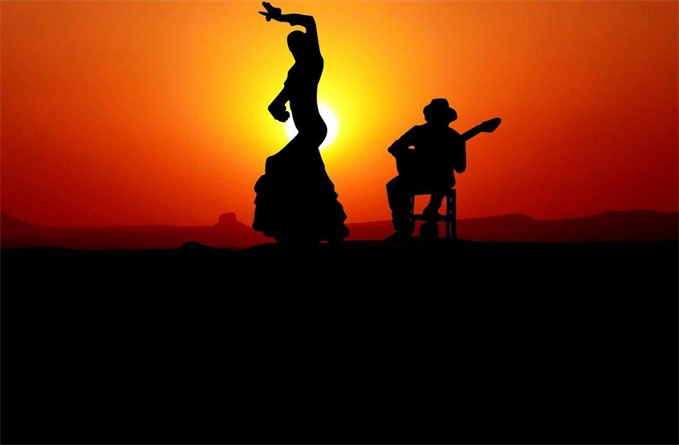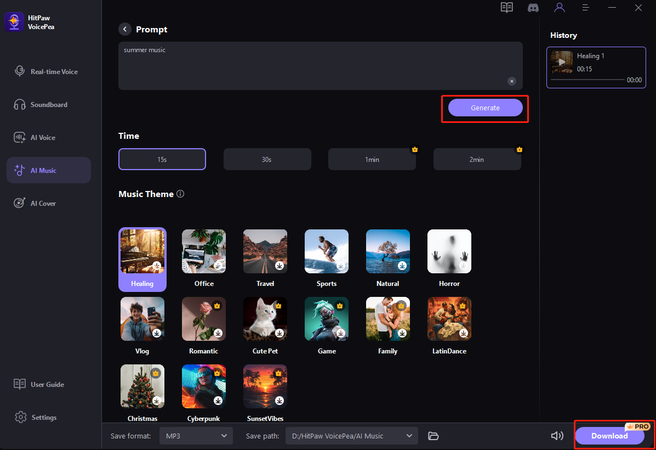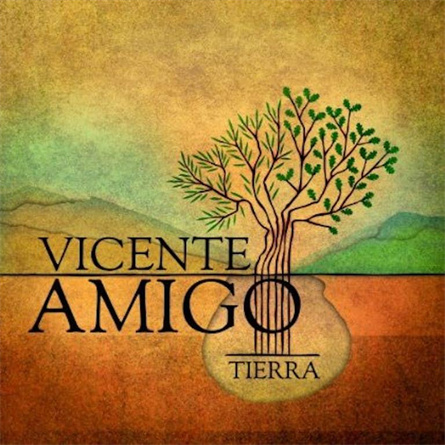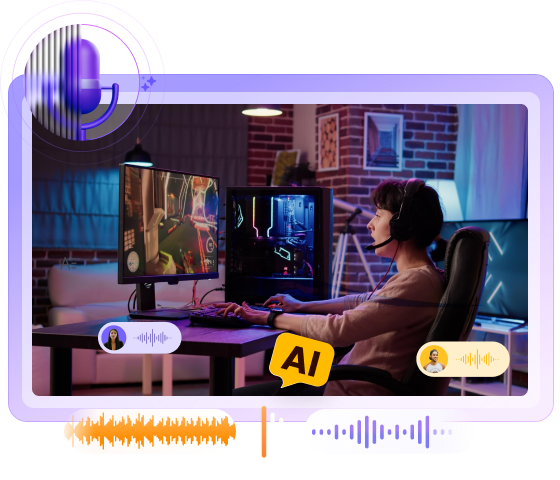A Comprehensive Review of Flamenco Music in 2025
Flamenco, with its roots deeply embedded in the soil of Andalusia, Spain, has captivated hearts worldwide for centuries. Its fiery rhythms, poignant melodies, and soul-stirring lyrics have transcended borders, resonating with audiences far and wide. And now, as we stand on the threshold of a new year, it's time to explore the state of Flamenco music and dancing in all its glory.
Join us as we unravel the threads of Flamenco's past, tracing its evolution through the ages. From the traditional palos to contemporary fusions, we'll examine how Flamenco continues to adapt and thrive in an ever-changing musical landscape.

What is Flamenco Music?
Flamenco music is a mesmerizing art form that embodies the soul of Spanish culture, captivating audiences with its passionate rhythms and emotional depth. Originating from the Andalusian region of Spain, flamenco is much more than just music; it's a vibrant expression of the Spanish spirit, encompassing dance, song, and instrumental performance.
Flamenco Music History
Flamenco music, originating from the cultural melting pot of Andalusia in southern Spain, has a history as complex and diverse as the land that birthed it. Its origins can be traced back to the blending of musical traditions brought by various communities, including the Moors, Jews, and Gypsies, who coexisted in Andalusia during the Middle Ages. These diverse influences converged to create a unique form of musical expression that would come to be known as flamenco music from Spain.
Now you might be wondering, where did flamenco music originate? Emerging in the late 18th century, flamenco initially served as a form of expression for marginalized communities, particularly the Gypsies, who faced social and economic marginalization. Through songs, dance, and instrumental performance, flamenco became a powerful means of conveying the joys and sorrows of everyday life, with themes of love, longing, and struggle permeating its lyrics and melodies.
Over time, flamenco evolved from a grassroots art form into a symbol of Spanish culture, gaining popularity both within Spain and beyond its borders. Its expressive rhythms, passionate vocals, and intricate guitar work captivated audiences worldwide, solidifying flamenco's status as a cherished cultural treasure.
Main Characteristics of Flamenco Music
- 1. Emotional Intensity: At the heart of flamenco dance music lies an intense emotional expression, with performers pouring their hearts into every note and movement. Whether it's the haunting melodies of the guitar or the soulful vocals of the singer, flamenco resonates with raw passion and sentiment.
- 2. Complex Rhythms: Flamenco is renowned for its intricate rhythmic patterns, often characterized by syncopation and improvisation. The rhythmic structure, known as compás, provides a framework for dancers and musicians to interact dynamically, creating a rich tapestry of sound and movement.
- 3. Dynamic Improvisation: Central to the art of flamenco is improvisation, allowing performers to express themselves freely within the framework of traditional forms. This spontaneity adds a sense of authenticity and immediacy to each performance, making every rendition of a song or dance a unique experience.
- 4. Integration of Dance: Inextricably linked to flamenco guitar music is the art of dance, with performers using footwork and graceful movements to interpret the music's emotional content. Flamenco dance, or baile, adds a visual dimension to the music, enhancing its power and intensity.

Creating Flamenco Musica can be a rewarding activity, and for those interested in exploring this art form, the HitPaw AI Music Generator offers a convenient solution. This innovative tool harnesses the power of artificial intelligence to simplify the music creation process, catering to both beginners and seasoned musicians alike.
Pros
- Easy to use, with a user-friendly interface
- Offers a wide range of customization options
- Can generate music quickly and efficiently
Cons
- Limited control over the final composition compared to traditional music production
- Requires an internet connection to use the AI features
Steps on How to Generate Flamenco Music Genre
Here's a guide on how to generate Flamenco music using the HitPaw AI Music Generator:
Step 1: Select Text to Melodies
Navigate to the "AI Music" section in the left sidebar of the HitPaw AI Music Generator interface. From there, choose the option to "Change the musical genre" to specify that you want to create Flamenco music.
Step 2: Click to Import Audio/Video
Next, import your audio or video files into the HitPaw AI Music Generator. You can upload files in various formats, including mp3, wav, m4a, and more. Simply click to import your chosen files to get started.
Step 3: Choose Music Genres
Once your files are uploaded, it's time to choose the music genre you prefer. In this case, select the Flamenco genre from the available options. You can preview different genres before making your selection to ensure it aligns with your creative vision.
Step 4: Generate Music and Download
After selecting the Flamenco genre, simply wait a few seconds for the HitPaw AI Music Generator to generate your unique Flamenco music project. Once the process is complete, you can join as a member (if required) and download your newly created Flamenco music to your device for further editing or sharing.

Watch the following video to learn more details:
Top 5 Youtube Flamenco Music
"Paco de Lucía - Entre dos Aguas"
This iconic Flamenco piece by the legendary guitarist Paco de Lucía showcases his virtuosity and innovation within the genre. "Entre dos Aguas" seamlessly blends traditional Flamenco rhythms with elements of jazz and Latin music, creating a mesmerizing listening experience.
"Camarón de la Isla - La Leyenda del Tiempo"
Camarón de la Isla, often hailed as one of the greatest Flamenco singers of all time, delivers a powerful rendition of "La Leyenda del Tiempo." With his emotive vocals and intense delivery, Camarón captures the essence of Flamenco's raw emotion and profound storytelling.
"Tomatito - Bulerías"
Tomatito, another renowned Flamenco guitarist, mesmerizes audiences with his electrifying performance of "Bulerías." This fast-paced Flamenco style is characterized by its lively rhythms and improvisational nature, and Tomatito's mastery of the genre is on full display in this captivating rendition.
"Eva Yerbabuena - Alegrias"
Eva Yerbabuena, an acclaimed Flamenco dancer, showcases her unparalleled skill and grace in this stunning performance of "Alegrias." With her precise footwork and expressive movements, Yerbabuena brings the traditional Flamenco dance to life, captivating Flamenco music YouTube viewers with her artistry.
"Vicente Amigo - Tierra"
Guitarist Vicente Amigo takes listeners on a mesmerizing journey with his evocative composition "Tierra." With its haunting melodies and intricate guitar work, this piece embodies the soulful essence of Flamenco music, inviting listeners to immerse themselves in its rich textures and emotions.

FAQs of Flamenco Music
Q1. What music is flamenco?
A1. Flamenco music is a traditional musical genre originating from the Andalusian region of southern Spain. It encompasses a wide range of musical styles, including passionate vocals, intricate guitar playing, rhythmic handclaps, and dynamic dance movements.
Q2. Why was flamenco banned?
A2. During certain periods in Spanish history, particularly during the 18th and 19th centuries, Flamenco was associated with marginalized communities, including the Gypsies (or Roma people). As a result, Flamenco music and dance were sometimes banned or restricted by authorities who viewed them as subversive or morally objectionable.
Q3. Is flamenco music gypsy?
A3. While Flamenco music has strong historical ties to the Gypsy community in Spain, it is not exclusively Gypsy music. Flamenco is a product of cultural exchange and collaboration among various communities, including the Moors, Jews, and Andalusians, in addition to the Gypsies. Over time, Flamenco has evolved into a rich and diverse art form that reflects the contributions of multiple cultural groups.
Final Word
It's clear that this art form holds a special place in the hearts of many, weaving together the soulful melodies, rhythmic beats, and expressive movements that define its essence. Despite its tumultuous history, Flamenco has emerged as a symbol of resilience and cultural pride, captivating audiences with its raw emotion and timeless beauty.
So whether you're seeking to compose your own Flamenco-inspired melodies or simply want to immerse yourself in its captivating rhythms, consider embarking on this musical journey with HitPaw AI Music Generator by your side. With its innovative technology and endless possibilities, HitPaw invites you to discover the magic of Flamenco music and make it your own.







 HitPaw Video Object Remover
HitPaw Video Object Remover HitPaw Photo Object Remover
HitPaw Photo Object Remover HitPaw VikPea (Video Enhancer)
HitPaw VikPea (Video Enhancer)


Share this article:
Select the product rating:
Daniel Walker
Editor-in-Chief
My passion lies in bridging the gap between cutting-edge technology and everyday creativity. With years of hands-on experience, I create content that not only informs but inspires our audience to embrace digital tools confidently.
View all ArticlesLeave a Comment
Create your review for HitPaw articles